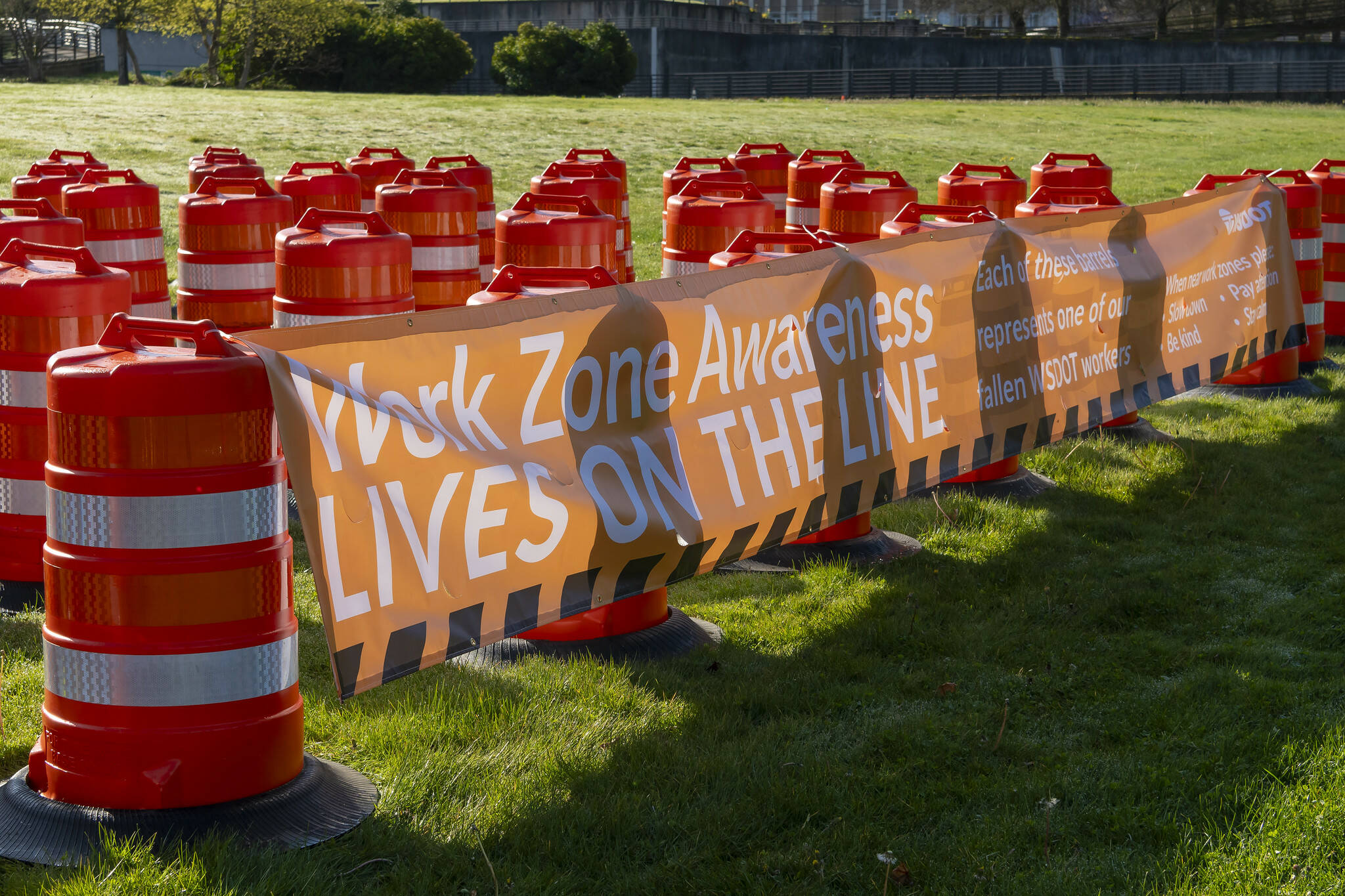April 15-19 is National Work Zone Awareness Week, and in the wake of four work zone crashes along Interstate 5, which all happened within 24 hours, the Washington State Department of Transportation (WSDOT) continues to urge drivers to slow down.
“There were three separate work zone collisions all this morning before 10 a.m. I was just getting ready to hit ‘publish’ on telling you about those three incidents when a FOURTH work zone collision happened,” said an April 8 WSDOT Facebook post. “People. Can we stop with this? This is not that hard. Slow down, move over, pay attention.”
According to an April 1 WSDOT blog post by communications manager Kris Olsen, the number of fatal crashes in marked work zones had doubled in 2023 when compared to the previous year.
“We had 10 fatal work zone crashes in 2023 resulting in 10 deaths. In 2022, we had five fatal work zone crashes resulting in six deaths,” Olsen wrote. “Numbers like these take our breath away. It’s why we’re continuing to take aggressive steps to protect not only our workers, but drivers and passengers as well.”
The most recent casualty of a Washington road worker in a work zone was Rodney C. Wheeler, 46, of Kent. Wheeler was a bridge tender on State Route 99 and First Avenue South bridge in Seattle and he was killed while working on June 30, 2023. In his obituary, Wheeler was described as a caring soul who “took pride in helping others in need, and his acts of service were very intentional.”
Every spring, the Washington State Department of Transportation (WSDOT) holds a memorial to commemorate workers who have lost their lives while on the job. On April 2, WSDOT honored the 61 workers who have died since 1950, which now includes Wheeler.
“Our crews work to make emergency repairs, keep travelers safe, and help traffic keep moving every day, but they need space to do that work safely,” said Secretary of Transportation Roger Millar. “We want everyone to return home at the end of the day.”
According to Washington State Patrol, the top three reasons for work zone collisions are following too closely, excessive speeding and distracted or inattentive driving.
“All of our emergency responders, from those who assist disabled vehicles to those who provide lifesaving care to crash victims, risk their lives on the side of our roads every day,” said Washington Traffic Safety Commission (WTSC) Director Shelly Baldwin. “They deserve to be protected, too. It’s easy for drivers to move over or slow down when approaching people or flashing lights on the road ahead. You can prevent another tragedy when you do.”
Work zone safety
WSDOT released the following tips for all drivers in work zones:
• Slow down. Drive the posted speeds, they’re there for your safety.
• Be kind. WSDOT workers are out there helping to keep you safe and improve the roadways.
• Pay attention. Both to workers directing you and surrounding traffic; put your phone down when behind the wheel.
• Stay calm. Expect delays, leave early or take an alternate route if possible; no meeting or appointment is worth risking someone’s life.


